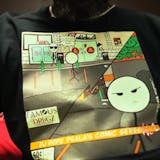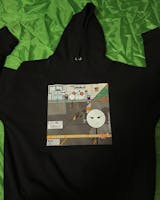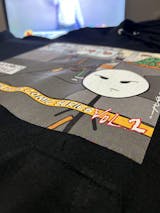Heat transfer printing methods have a long history of providing consistently superior results in the variety of designs and substrates. Recently, however, the DTF transfer method has been shaking up the industry with its diversity, high print quality and fast production. Although a new method, DTF printing's ability to utilize technology effectively is suitable for many printing businesses. But are DTF transfers vinyl or not and what are the differences? Here is important information on whether DTF printing is a vinyl transfer or not...
What Is Vinyl Heat Transfer Printing?
An impressive method of personalizing fabric products is vinyl heat transfer. This process starts by printing your design on white colored heat transfer vinyl using a special eco-solvent printer. A vinyl cutting plotter is then used to cut along the outline of the design.
Once your design is printed and cut, a weeding tool is used to remove the excess vinyl around the image to reveal the desired image. Transfer tape is then applied over the entire design to hold everything in place before removing the bottom liner of heat transfer vinyl. Only the adhesive vinyl needs to remain at this stage.
Why Is DTF Better Than Heat Press Vinyl?
It is possible to say that the DTF transfer process is better than vinyl transfers. This is because weeding is the first and most important step in creating a vinyl heat transfer. If your artwork is detailed or complex, this step can take a lot of time and it's easy to miss small details. This may mean that you have to reprint or cut out parts of your design.
However, with DTF printing technology you can skip this arduous process because there is no weeding required. DTF offers a technology where the print is transferred directly onto a coated PET film that acts as a transfer paper.
On the other hand, DTF prints are highly versatile and can be applied to almost any fabric, including cotton, cotton blends, polyester, rayon and silk. However, it is important to correctly configure the temperature and pressure settings of your heat press before printing on the fabric of your choice.
DTF printers have the ability to print on a variety of substrates, from ceramic to metal. This gives you unlimited options! Whatever the shape of the surface, transferring designs is easy. You only need a heat press to apply the prints to mugs and other items.
Is High Heat Vinyl Printing Faster or DTF Printing?
Production speed is an important factor when evaluating the performance of a t-shirt printing machine. This characteristic shows how fast the machines can print. It is a fact that entry-level DTF printers are capable of printing 4 square meters per hour. On the other hand, Roland BN20 vinyl heat transfer printers can print 1.75 square meters per hour.
DTF printing is a very simple process. As a first step, your design is created and printed on DTF transfer paper. Then, the transfer paper is used to transfer the design onto your garment by applying heat and pressure. Finally, remove the transfer paper and allow the design to cool. This offers a simple process that anyone can follow with ease.
Vinyl printing, on the other hand, requires a more complex process. It involves additional steps, especially weeding. Compared to DTG printing, there is no need for time-consuming processes such as processing garments or preparing multiple screens for multi-color screen printing orders.
Is DTF Printing Different from Vinyl?
DTF printing is not vinyl and is quite different from it. Because vinyl material is not used in the production process. Vinyl transfers usually use thermal transfer technology. DTF transfer, however, is a printing process directly on film. On the other hand, this printing requires the film layer for direct transfer.









